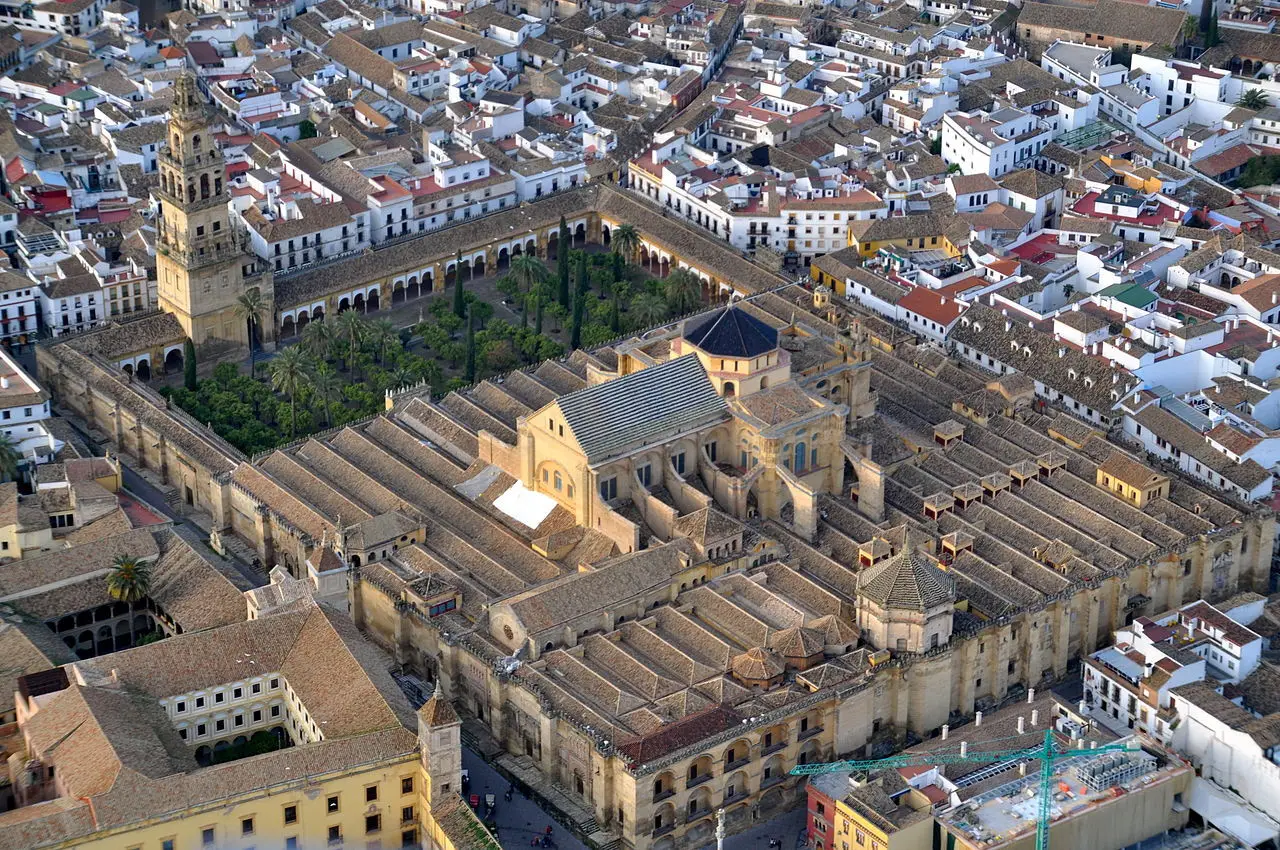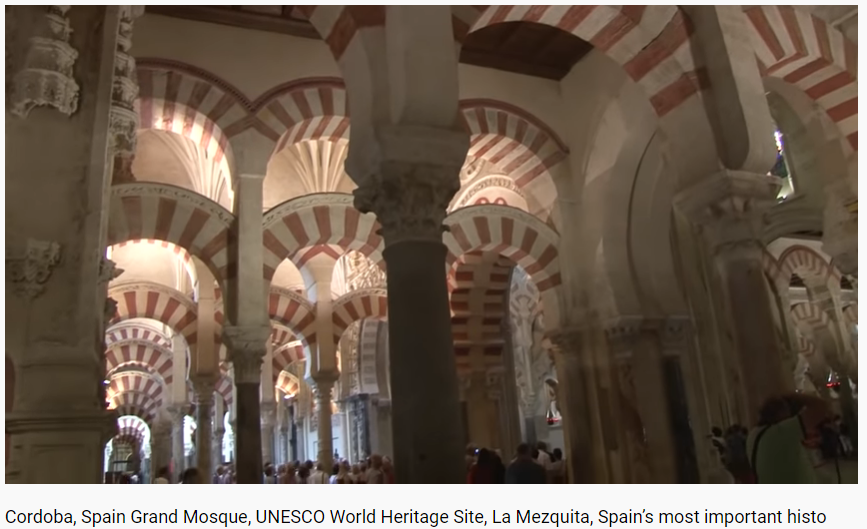

The Grand Mosque of Córdoba in Spain was chosen the most important historic treasure of Spain in a major Spanish public poll in 2007. The building is most notable for its vast interior space, with 856 columns of jasper, onyx, marble, and granite. at one time it contained 1283 columns. There are nineteen aisles from east to west, and thirty-five from north to south. You appear to be walking about in the silent depths of a great forest rather than in a building; whichever direction you turn to, your eye strays along rows of columns, which cross each other, and lengthen out endlessly, like marble trees growing from the soil. When you walk in.. you feel transported suddenly into another world… overwhelmed, fascinated, amazed and filled with wonder. this architecture is like a living thing, with a canopy of flowing curves above you formed by the double rows of crossed arches, like the interlaced branches of great trees. The double arches were a new introduction to architecture, permitting higher ceilings than would otherwise be possible with relatively low columns. The double arches consist of a lower horseshoe arch and an upper semi-circular arch. The full height of the ceiling is able to reach 35 ft. It was once lighted by more then ten thousand gold, silver and bronze lamps, suspended from the ceiling, There was originally a Roman temple dedicated to Janus on this site, then a Catholic Christian church built by the Visigoths. When Muslims conquered Spain in 711, the church was first divided into Muslim and Christian halves, each party worshipping in its respective portion, because the Moors never denied religious liberty to the conquered people. They maintained a harmony between cultures in those days. Seventy years later, the Moors purchased the other half from the Christians and then demolished the entire building, in order to build the grand mosque of Córdoba. A beautiful gilded dome soars high over the Maksoureh, an anteroom for the caliph and his court in front of the mihrab The mosque underwent numerous subsequent changes and reached its current dimensions in the year 987 with the completion of the outer naves and courtyard. Construction of the mosque employed thousands of artisans and labourers, over hundreds of years. Moorish kings could afford this because the were greatly enriched by the acquisition of the valuable mines of Iberia, the quarries of marble, and other sources of wealth. It became the second biggest mosque in size, after the Holy Mosque in Mecca, The main hall of the mosque was used for a variety of purposes. It served as a central Prayer hall for personal devotion, the five daily Muslim prayers and the special Friday prayers. It also would have served as a hall for teaching and for Sharia Law cases The edifice also has a richly gilded prayer niche or mihrab. The mihrab is a masterpiece of architectural art, with geometric and flowing designs of plants. When Córdoba was taken by King Ferdinand III in I 236, the mosque was reconsecrated as a Christian cathedral, The kings who followed added further Christian features, but little alteration was made in the original structure. It was in I523 the unfortunate idea possessed the bishop, to build a new church in the middle of the Mohammedan temple. columns were pulled down, the larchwood ceiling was destroyed, and the Christian church was built, very Spanish in its large proportions and wealth of ornament. Charles V “You have built here what you, or any one, might have built anywhere else ; but you have destroyed what was unique in the world.” There are historical and cultural reasons why such an amazing building was constructed and has survived for a 1,000 years. Córdoba has always been a very important place. Even today is has the largest urban area in the world declared World Heritage by UNESCO. 2,000 years ago at the time of Julius Caesar, Córdoba was the capital of the Roman province of Hispania Ulterior. With the fall of Rome it was conquered by the Visigoths and then it was conquered by invading Islamic armies in the eighth century. Córdoba became the capital of the Islamic Emirate including most of the Iberian Peninsula. It has been estimated that in the 10th century Córdoba was the world’s biggest city, and for several centuries was one of the most advanced cities in the world — a great center of culture, politics, and finance. Córdoba had 3,000 mosques, splendid palaces, 300 public baths, medical schools, universities and what was then the largest library in the world, housing from 400,000 to 1,000,000 volumes. it had also become a center for education under its Islamic rulers.
I agree to the terms outlined below:
You agree to upload and assign Mosqpedia Database the rights to use the content worldwide and in perpetuity across all current and future media platforms. Mosqpedia Database may edit, copy, adapt and translate your contribution.
The content will be distributed under the Creative Commons Attribution-Deed – Attribution-NonCommercial-NoDerivatives 4.0 International – Creative Commons
All data will be stored in line with data protection regulations.